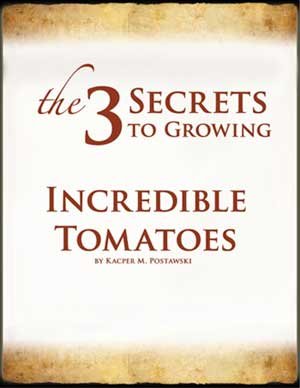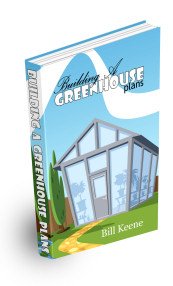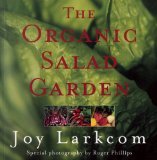
Vegetable, Fruit, and Herb Gardening in October
Tomato season is coming to a close for gardeners in many parts of the country. But until frost hits, it's time to harvest and enjoy fresh
tomatoes, and perhaps preserve some of the bounty for winter eating. If you want to find out how to can, freeze and dry tomatoes, along with
advice on preparing fresh tomatoes for use in recipes, you'll enjoy the Web site Tomato Dirt. It includes information on both water bath and
pressure canning and step-by-step advice on freezing whole, chopped, sliced and pureed tomatoes.
Pumpkins
It's hard to resist pumpkins...they bring out the kid as well as the decorator in us. If you are planning on carving a jack-o-lantern, then buy field pumpkins.
Field pumpkins are larger and easier to carve. Pie pumpkins, which are smaller, have a tough skin that makes them hard to carve, but they would be great painted.
If you are storing pumpkins and winter squash for your Thanksgiving dinner, then keep them in a cool area at around 50 degrees F.
- Harvest sweet potatoes after they have seen a night or two of frost. Cut the tops from the roots early in the day to prevent the bitter juices
from the tops from moving down into the tubers.
- Spred maure on the rows where you will be planting early peas net spring. While there may be a bit of loss of nutrients from leaching, turn the
manure under, but leave the earth rough and cover with straw to keep erosion at bay.. You will be able to plant peas during an early thaw by pulling the hay to one side.
- Jerusalem artichokes should have formed tubers, but you only need to dig enough for use right now. As soon as the soil has frozen, mulch the
bed with a thick layer of leaves, this will allow you to dig up the tubers any time you need them. You can do the same with carrots
in all but the very coldest zones.
- IF you see artichoke tubers are smaller in size, it is time to make a new bed. Transplant some to a bed of rich soild that is dug deep and set 18 inches apart.
- Cut back perennial herbs to encourage well-branched growth next year.
- Harvesting fruits and vegetables is the best part of growing them. As is often the case, you may have produced much more of certain type
than your family can consume. Share the abundance of squash and tomatoes with friends and neighbors, and don't forget about your local food bank
or second harvest organization! Although most fruits and vegetables are best when eaten fresh on the day they're picked, you can extend the season
by freezing, drying, storing, or canning.
- Dig and divide congested clumps of rhubarb.
- Many disease-causing viruses overwinter in the roots of perennial weeds. Tomato mosaic virus overwinters in the roots of ground cherry, horsenettle,
jimson weed, nightshade, and bittersweet; cucumber mosaic virus lives in the roots of milkweed, catnip, and pokeweed; bean mosaic overwinters in white sweet
clover roots; and many cabbage diseases spread from wild members of the cole family. A good fall cleanup is essential. Don't wait!
- Cut back raspberry canes that have grown too long, to prevent damage caused by winter winds.
- Some root crops, such as carrots, onions, and parsnips can be left in the ground in cold climates and dug up as needed. Apply enough
mulch to keep the ground from freezing, and the crop will be kept fresh until it is needed.
- After you have finished harvesting your summer vegetables, plant a cover crop of clovers, cow peas, soybeans, or vetches for
the purpose of plowing under next spring. These nitrogen producing plants will provide good organic matter and food for your garden
crops next year, as well as helping to control weeds over the winter.
- A plant or two of parsley taken from the garden and potted up will do well all winter if watered and set in a sunny window.
Chives, sage, and thyme also can be maintained in this manner.
- Use dried stems of herbs to make fragrant wreaths and dried flower arrangements.
"Tickle the earth with a hoe, it will laugh a harvest."
-- Author Unknown

FREE Garden Journal!!
Join "Garden Notes" and plan for Harvest Success as you track and record your gardening progress.
Your Free Personal Garden Journal has pages for jotting down notes on the seeds you start,
your new plantings, when you fertilized, and even a graph to plot a new garden.

FREE Report
If you're interested in growing tomatoes, you've got to read this free report, because you're about to find out
3 age-old, tried and tested, organic tomato growing secrets that turn any tomato plant into a thriving source of the
juiciest, most
mouth-watering tomatoes you've ever tasted.
I didn't want to see another internet "eBook" on growing anything, but my husband signed up for Kacper's free report and I have to tell you, it is WELL worth the read. If you think you know everything about growing tomatoes, I challenge you to read Kacper's report. HIGHLY recommended!
Free Report Here

What's New?
Discover How To Easily Build An Attractive And Affordable Greenhouse That Will Grow Anything In Any Conditions… Also, building your own greenhouse just makes economical sense. You can build a greenhouse at just a fraction of the cost of buying a pre-built one. Most pre-built greenhouse you buy need to be assembled anyway, you’re really just paying hugely inflated prices for the material.
Click Here!
Book of the Month

Based entirely on organic gardening principles. This says it all. Joy's book has been fully revised and updated and includes extensive new reading, particularly
on oriental and fruiting vegetables, and did I mention, is now entirely based on organic gardening practices.
Read More...






